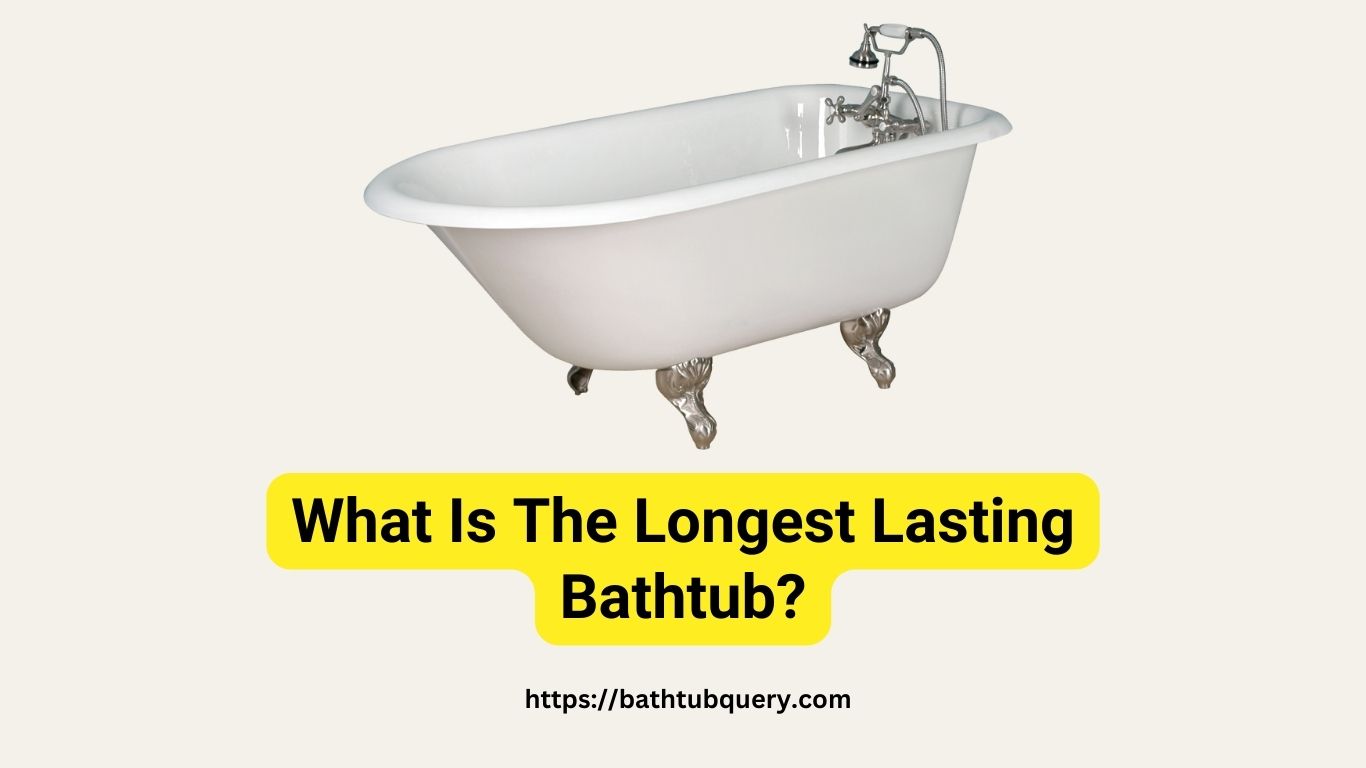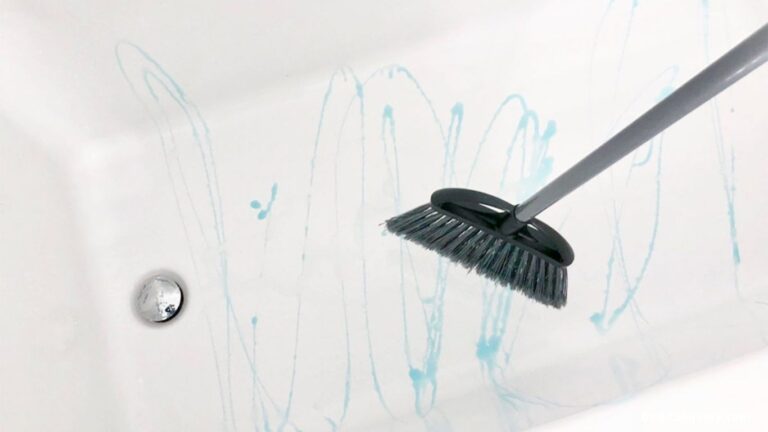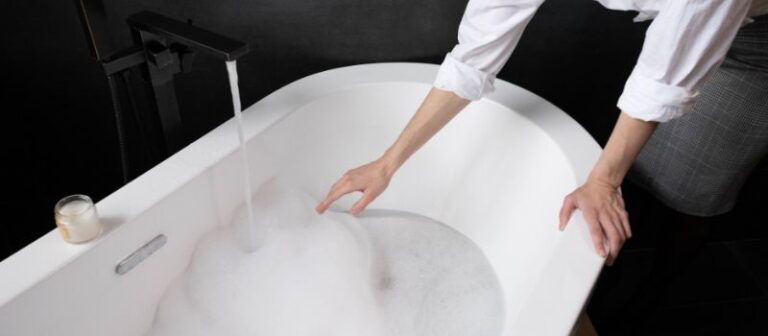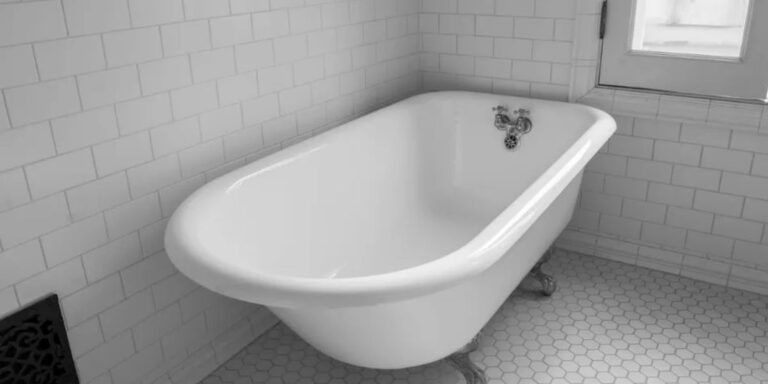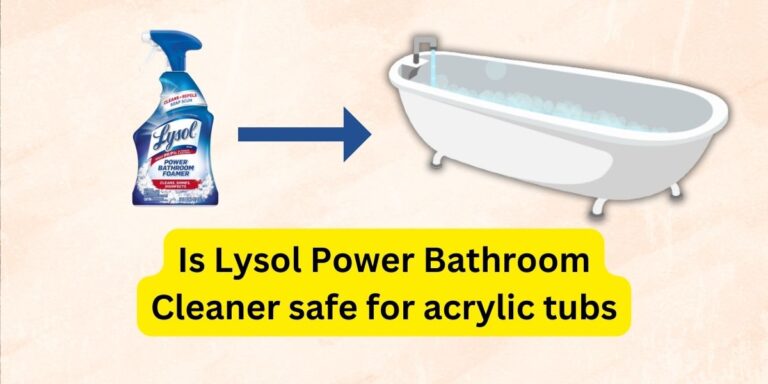What Is The Longest Lasting Bathtub? The Longest Lasting Tub
It’s extremely important to think about the bathtub’s longevity when making a purchase, in addition to its appearance. Bathtubs can be made from a number of different materials, but discerning homeowners often want to know, “What is the longest lasting bathtub?”This article will help you find the answer to that question and make a well-informed decision while shopping for a bathtub.
So, What Is The Longest Lasting Bathtub?
If longevity is your priority, cast iron bathtubs reign supreme. Made from heavy, durable iron coated with a thick layer of enamel, these bathtubs are known to last for decades. Let’s delve into the various reasons why these tubs are celebrated for their durability.
Incredible Durability
Cast iron bathtubs are the strongest and longest lasting option. This toilet heaviweight is constructed from one of the hardest metals known to man, and it lasts for years as a result. A cast iron bathtub is an investment not merely in a functional bathroom addition, but in a piece of enduring beauty that may outlive the house. These tubs, when well-maintained, can last for a century or more, which is a remarkable testimonial to their high quality and durability.
Heat Retention
One of life’s simple pleasures is a lengthy, hot bath. However, nothing is more disheartening than a bath that soon turns chilly. Cast iron tubs save the day here, functioning like a constant bear embrace while you soak. The cast iron in your bathtub has natural heat retention capabilities, so you can enjoy a lengthy, hot soak without worrying about getting chilled.
Scratch and Chip Resistant
Scratches, chips, and other signs of wear and tear are unavoidable consequences of daily life. A cast iron bathtub, meanwhile, would look down its nose at such insignificance. It is protected from damage such as scratches and chipping by an enamel covering that is both thick and robust. Enamel acts as a protective barrier, keeping your tub looking like new for years to come in spite of regular use.
Classic Aesthetic Appeal
A cast iron tub has an air of classic sophistication about it. Its timeless aesthetic exudes an endearing sense of history and tradition. These tubs are commonly seen in retro-inspired designs that may instantly transform the look of a bathroom.
A cast iron bathtub is the perfect focal point for any bathroom, whether you’re going for a minimalist appearance with a hint of ancient grandeur or trying to recreate the atmosphere of a Victorian spa. This is more than just a practical piece of equipment; it’s a proclamation of one’s personal taste and an ode to the everlasting elegance of classic design.
Comparing Bathtub Materials
Here’s a brief comparison of cast iron with other popular bathtub materials:
| Material | Durability | Heat Retention | Scratch Resistance | Aesthetic |
|---|---|---|---|---|
| Cast Iron | Excellent | Excellent | High | Classic |
| Acrylic | Good | Moderate | Moderate | Modern |
| Fiberglass | Moderate | Low | Low | Modern |
| Stone Resin | Good | Good | High | Luxurious |
How Long Does A Bath Tub Last?

It’s important to take into account that there are a number of variables that affect how long a bathtub will last. The material, intended use, and upkeep of the bathtub are all important considerations.
- Acrylic and Fiberglass Tubs: Common for their affordability and ease of installation, these bathtubs typically last between 10-15 years. While they may not endure as long as other materials, their low cost makes them a favorite choice among many homeowners.
- Porcelain-Enameled Cast-Iron Tubs: This bathtub material is renowned for its durability, often lasting more than 30 years. However, to maintain their charm and functionality, they require refinishing every 5-15 years.
| Material | Lifespan | Refinishing Interval |
|---|---|---|
| Acrylic/Fiberglass | 10-15 Years | Not required |
| Porcelain-Enameled Cast-Iron | Over 30 Years | 5-15 Years |
What Determines How Long a Bathtub Will Last?
If you know what affects your bathtub’s lifespan, you can take measures to make it last longer.
Usage
One of the most important things that will determine how long your bathtub lasts is how often and how you use it. A bathtub that is used regularly is like a car that is driven hundreds of miles each day; it will eventually wear out and need repairs. Things like broken tiles, clogged pipes and uneven paint jobs fall into this category.
Moreover, actions like cleaning with harsh chemicals or scrubbing with abrasive equipment can drastically reduce durability. Keep in mind that the longevity of your bathtub is directly proportional to the care with which you use it. If you take care of your tub, it should last you for many years and provide you with the soothing soak you crave at the end of each day.
Maintenance
The lifespan of your bathtub is directly proportional to how well you maintain it. Besides preserving its aesthetic value, regular cleaning also significantly increases its service life. Dirt, soap scum, and mineral deposits can dull the polish and cause damage if they aren’t removed on a regular basis.
However, you should avoid cleaning the bathtub with any chemicals or instruments that could scratch or dull the surface. To maintain your tub’s pristine condition, use only non-abrasive cleaning products and soft tools whenever possible. In addition, if you keep an eye out for leaks and cracks, you may correct the little things before they become big ones.
Installation
The quality of your bathtub’s installation determines how long it will last. Leaks, poor drainage, and eventually even structural damage can result from a poorly built bathtub. It is crucial to have your bathtub built by trained personnel who are familiar with all applicable regulations.
The tub must be levelled, sealed, and the plumbing must be connected appropriately. Ultimately, you can save time and money by going with a dependable installation. After all, even the best bathtub in the world won’t survive very long if it isn’t built correctly.
Material Quality
Your bathtub’s durability is directly related to the materials it’s built of. Acrylic, fibreglass, cast iron, and porcelain-enameled steel are just few of the materials used to create bathtubs. The benefits and drawbacks of each substance vary.
Tubs made of acrylic or fibreglass, for example, have the advantages of being lightweight and inexpensive without necessarily offering the same level of durability as those made of cast iron or steel. Cast iron tubs, on the other hand, are heavier and more expensive but last a very long time and keep water hot for a long time.
The trade-off between longevity and expense should be kept in mind while choosing a bathtub. Spending more money on a high-quality bathtub up front may not be a bad idea if it means years of relaxing soaks in the tub.
Signs You Need to Replace Your Bathtub
Being aware of the signs indicating that your bathtub might need replacement is crucial. Look for:
- Persistent stains or discoloration
- Visible cracks or leaks
- Difficulty in cleaning
Frequently Asked Questions
How long can a cast iron bathtub last?
With proper care, a cast iron bathtub can last up to a century.
Do cast iron bathtubs retain heat well?
Yes, the thickness of cast iron helps retain heat longer than other materials.
Are cast iron bathtubs resistant to scratches and chips?
Thanks to their enamel coating, cast iron bathtubs are highly resistant to scratches and chips.
What type of aesthetic does a cast iron bathtub provide?
Cast iron bathtubs offer a timeless, classic aesthetic that suits a wide range of bathroom decors.
Are there other durable bathtub materials aside from cast iron?
Yes, other durable materials include acrylic and stone resin, but they may not match the longevity of cast iron.
Key Takeaways
Cast iron bathtubs are the best option if you’re looking for a long-lasting tub. Their timeless beauty, resilience to scratches and cracks, capacity to retain heat, and longevity make them an excellent choice for any home.
Related articles:
- What is the Most Comfortable Bath to Lay in? Which One To Choose?
- How Long Does Bathtub Reglazing Last? What You Need to Know
- Do Acrylic Bathtubs Need Insulation? Comprehensive Insight for Your Home Improvement

Amanda has been designing and installing bathtubs for over 15 years. She first got interested in the bathtub industry while working as an interior designer right after college. During her years as a designer, Amanda was frustrated by the lack of high-quality, unique bathtub options for her clients. This passion led her to start her own bathtub website in 2009.

